
[“Cushing has fewer than 10,000 residents, but you can drive around for hours and still not see all the huge tanks there.”]
Tuesday morning, I caught a portion of an NPR piece on the “pipelines and trucking corridors” that bring Canadian oil from the Alberta oil sands into the United States — and then promptly forgot about the piece, until I was reminded of it by Alexander Trevi.
The piece begins by noting that “today, Canada is the single biggest foreign source of oil for the U.S., and industry analysts project that 20 years from now, it may be supplying one-fourth of all U.S. oil needs”, which puts the importance of those infrastructures into clear perspective. (That piece, which then describes domestic opposition to expanding both those infrastrucures and our reliance on Canadian oil, is well worth reading, as is yesterday’s sequel, which looks at how infrastructural bottlenecks influence market prices.) With apologies to Trevi, who triggered the idea for this post by not only sharing the original article, but also hunting down the TransCanada pipeline’s Illinois terminus, I’ve put together a short aerial tour of the infrastructures — the pipeline is essentially invisible, being buried underground, but attendant tank farms, pumping stations, and refineries leave obvious marking patterns on the land — so helpfully mapped by NPR.
This tour is split into two components: first, TransCanada’s Keystone pipeline system (PDF), which runs from Alberta through Manitoba via a fork in Nebraska to endpoints in Illinois and Oklahoma, and second, trucking corridors in Montana and Idaho, used by both Imperial Oil and ConocoPhilips. (You can see the two maps that this tour is based on in the original article.)
Keystone Pipeline
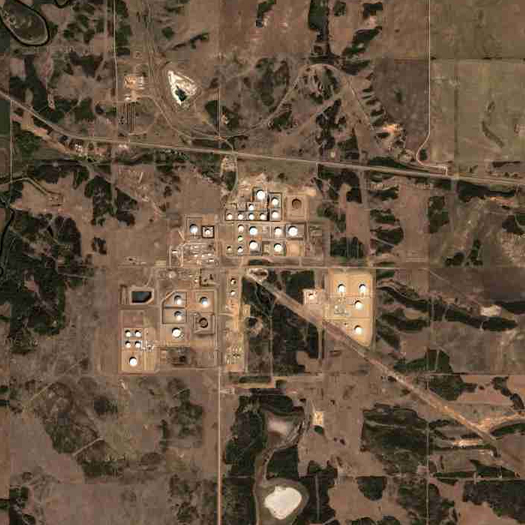
[The Keystone Pipeline — currently, 2,147 miles of 36-inch diameter underground pipe capable of carrying some 435,000 barrels of oil a day, with another 1,980 miles planned in the Keystone XL expansion — begins here, in Hardisty, Alberta.]
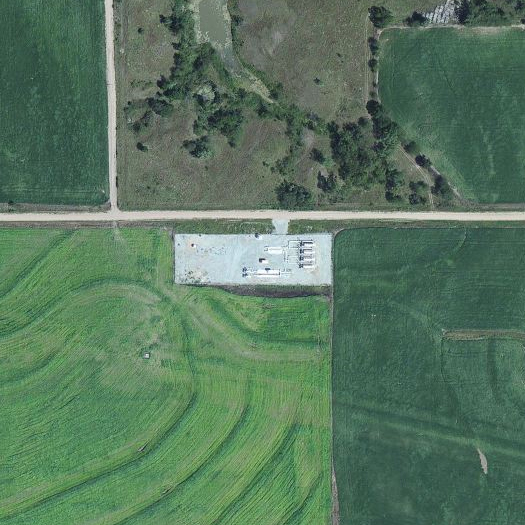
[This, which I believe to be one of the Keystone Pipeline’s 41 pump stations, is, as far as I can tell (the address appears to be the property of TransCanada), the sole above-ground expression of the fork in the Keystone Pipeline in Steele City, Nebraska.]
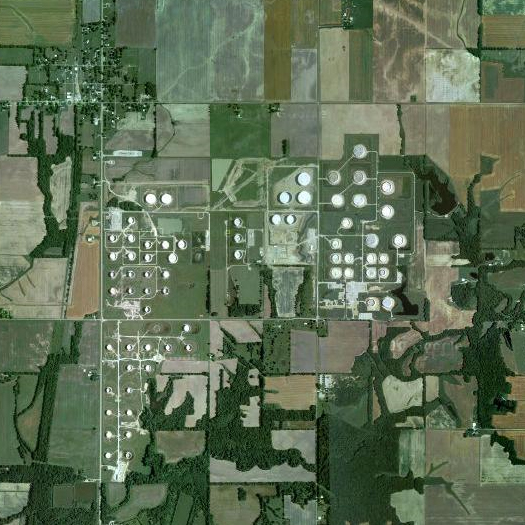
[Tank farms at the terminus of the Keystone Wood River-Patoka pipeline, near Vernon, Illinois; via @pruned.]
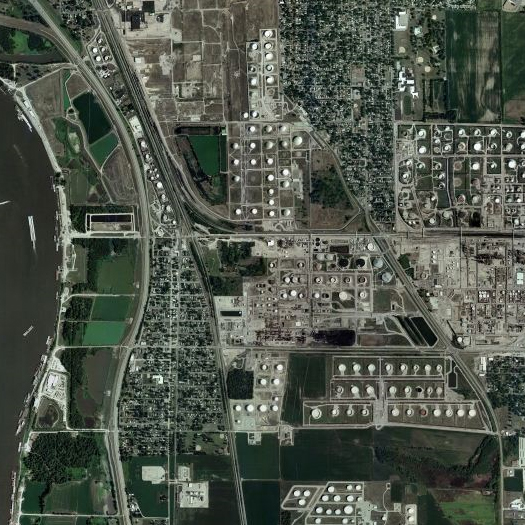
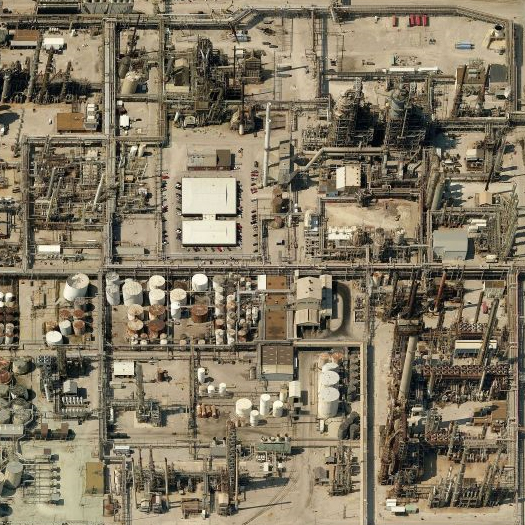
[Refineries and tank farms in Wood River, Illinois, the other primary destination for south-bound oil on the Wood River-Patoka pipeline.]

[Even more tank farms in Cushing, Oklahoma, at the southern end of the Keystone’s other leg. Cushing is the self-proclaimed “Pipeline Crossroads of the World”.]
Trucking Corridors (Imperial Oil and ConocoPhillips)
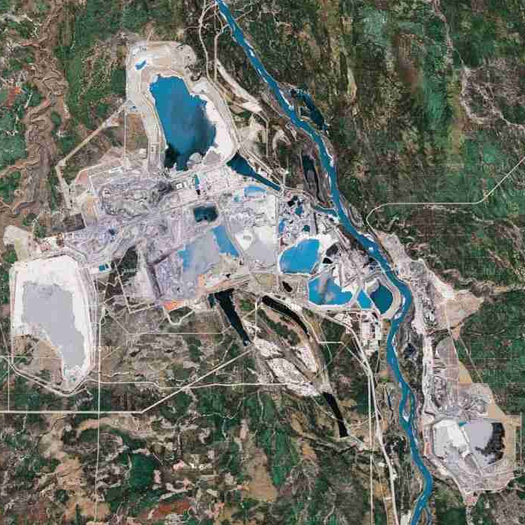
[The source: Athabasca Oil Sands, the largest of Canada’s oil sands fields, near Fort McMurray, Alberta]
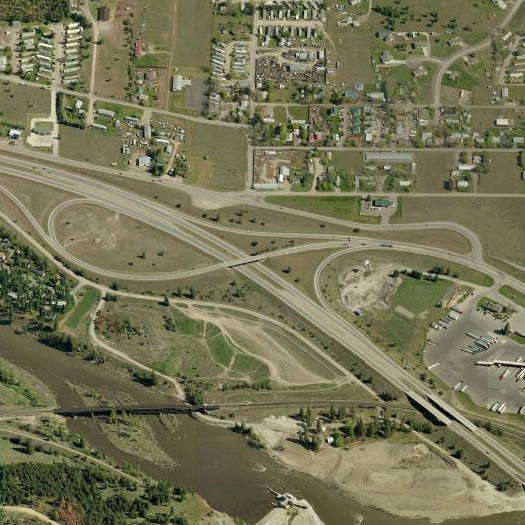
[The intersection of Mountain Highway 200 — which heads north to Canada — and I-90, near Bonner, Montana. Oil-related traffic splits here to move either east to Billings or west to Idaho.]
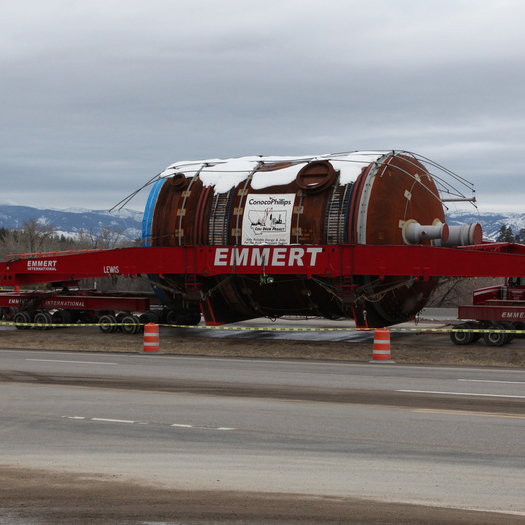
[Coke Drums waiting along the side of the highway in Montana; “the loads are so big — taking up two highway lanes — they have to travel at night”; image via flickr user Nicholas Senn.]
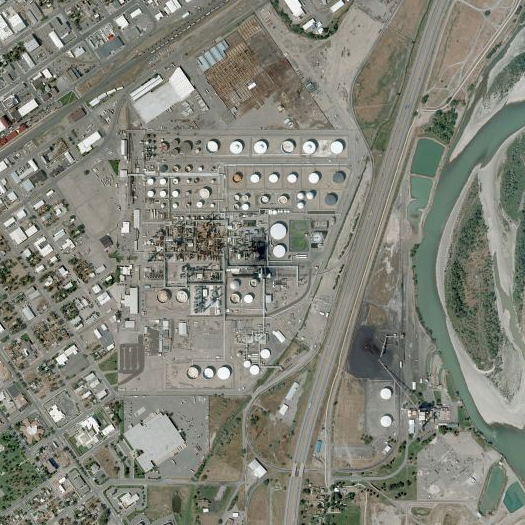
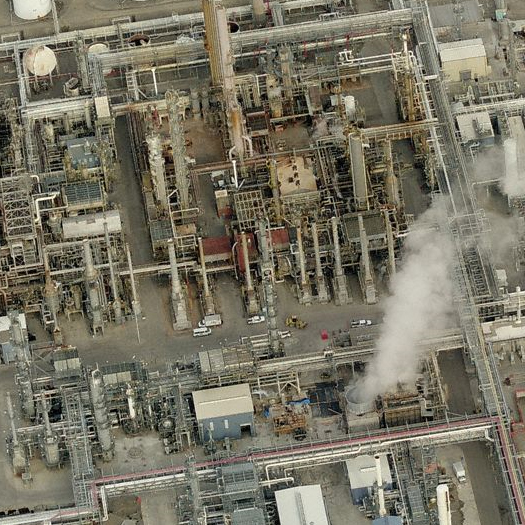
[ConocoPhillips Refinery, Billings, Montana, which “produces a high percentage of transportation fuels, such as gasoline, aviation and diesel fuels, as well as fuel-grade petroleum coke” and whose “finished petroleum products… are delivered via pipeline, railcar and truck… to markets in Montana, Wyoming, Utah and Washington”; images via bing.]

[Above: the Port of Lewiston, Idaho, on the Clearwater River at its confluence with the Snake River — unsurprisingly, Idaho’s only deepwater port (unless you’re surprised that Idaho has any ports at all); below: Lewiston, via wikipedia.]
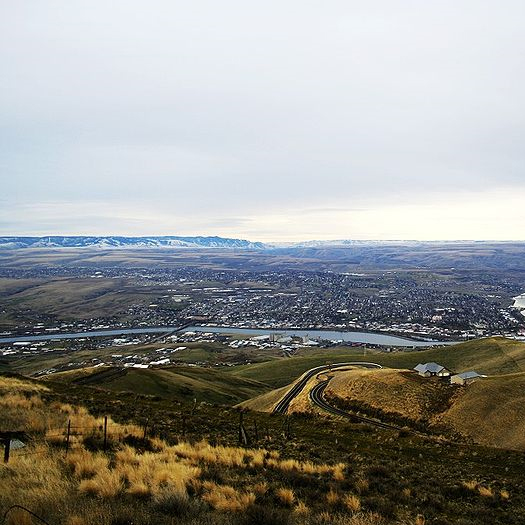


Excellent blog. Thought you guys might want to read a section of an article we (P-REX + Harvard Economists) wrote concerning the environmental dimensions of the oil sands and the “too-big-to-control” phenomenon. Be sure to check out the migrating duck story and the reclamation issues in section 3. You can access it here:
http://onlinelibrary.wiley.com/doi/10.1111/j.1539-6924.2010.01477.x/full